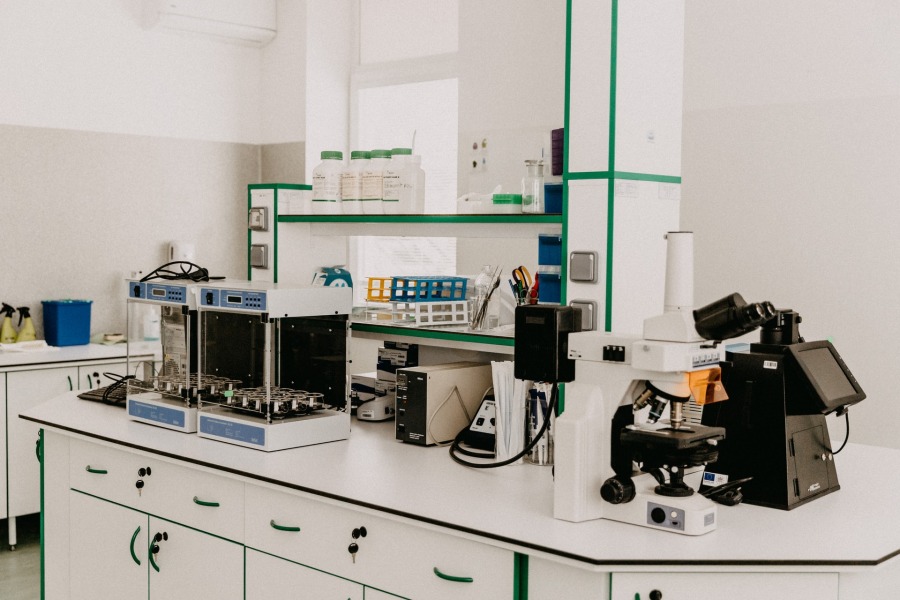Unfortunately, lab accidents can happen. When they do, the consequences can be very serious. Some of the most common lab accidents are cuts, scrapes, heat, and chemical burns. However, a lot of other unfortunate events can happen too. Events such as fire, contamination, or inhalation are also common issues when it comes to working in a lab. Spills and breaks happen usually as well. All of these incidents can cause various types of damage. To reduce this risk to a minimum and to make sure that you, your colleagues, and the lab itself are safe, make sure to take some cautionary measures.
Maintain a chemical inventory
Handling lab chemicals should always be taken as a serious task. Chemical hazards can get very bad and, whenever you can, you should prevent them. One way to do so is to maintain an accurate chemical inventory. The first thing you need to do is to make a list and update it regularly.
Make sure to have a procedure for the new chemicals coming in. If you currently have substances in your lab that you cannot identify, make sure to do it as soon as possible. For instance, peroxides and explosivity testing could help you determine whether the substance is of high risk or not.
Label the chemicals
It’s essential to know what you’re working with in a lab. The best way to avoid an emergency is to label each chemical as soon as it gets into the lab. Without a label, you could take peroxide-former in the sunlight or not test it regularly. This could directly endanger you and the other researchers.
The same could happen if you label the chemical improperly. On the other hand, labelling the chemicals correctly will keep all of you safe. You should put the date collected, as well as the date opened, and re-test or disposal of the label. Another important thing to do is to train the researchers to know how to handle the bottles properly.
Store the chemicals safely
When using hazardous chemicals, you need to know to properly use, handle, and store them. Storing of the chemicals is a major part of keeping the lab in a safe environment. If you work with energetic materials, you should always make sure that they’re stored in a dry spot such as a cabinet. This way, they won’t dry out.
You should also make sure to not leave the bottles full of high-hazard substances uncapped or in warm environments. Instead, you should always use high-quality laboratory equipment as this is the only way to keep the lab hazard-free. Depending on each substance, you’ll know how to properly store them and you should notify the other researchers of this as well.
Clean the lab properly
Even though cleaning the lab daily is important, you should make sure to schedule some annual cleanouts as well. It can often happen that a chemical has been on a shelf for too long. Such chemical should be classified as waste, but that won’t happen unless you inspect them properly.
This is a process that will probably involve many people. Researchers, lab safety coordinators, and department managers should work on this together. The researchers would point out the chemicals ready for disposal, while the lab directors would talk to lab safety coordinators about the technique of the disposal.
Check out the electricity
Electrical hazards can also happen in a lab. Luckily, there are ways to prevent them. The most important part of this prevention is to regularly check the equipment in the lab. Before using a piece of equipment or a tool, you should always look for some signs of damage. If you do find some, make sure to report this to your supervisor.
You should also keep all switch boxes clean and closed. If you don’t know how to handle the electrical equipment on your own, make sure to have some with more experience with you. Never try to repair electrical equipment on your own. Marking the circuit breaker panels will also keep you safe in the lab.
Prevent fire hazards
Flammable liquids, hot surfaces, sparks and ignitions are all relevant when it comes to the fire hazards in a lab. Remember to always handle flammable liquids with extreme care and attention. You need to respect the time for which the flammable liquid is allowed to be outside of the storage cabinet as well.
Keeping the floor clean and tidy will reduce the risk of having the spars or hot metal cause a fire in the lab. Investing in fire retardant curtains and unplugging the machinery when no one using it will further reduce this risk. As far as the sparks are concerned, make sure to not work with flammable chemicals near ignition sources such as hot plates or flames.
Conclusion
Lab accidents can be prevented. With these simple tips, you’ll be able to save your life, the lives of other researchers, the lab, and the progress you’ve made in your research. Make sure to follow them and you’ll have no damage to fix whatsoever!

